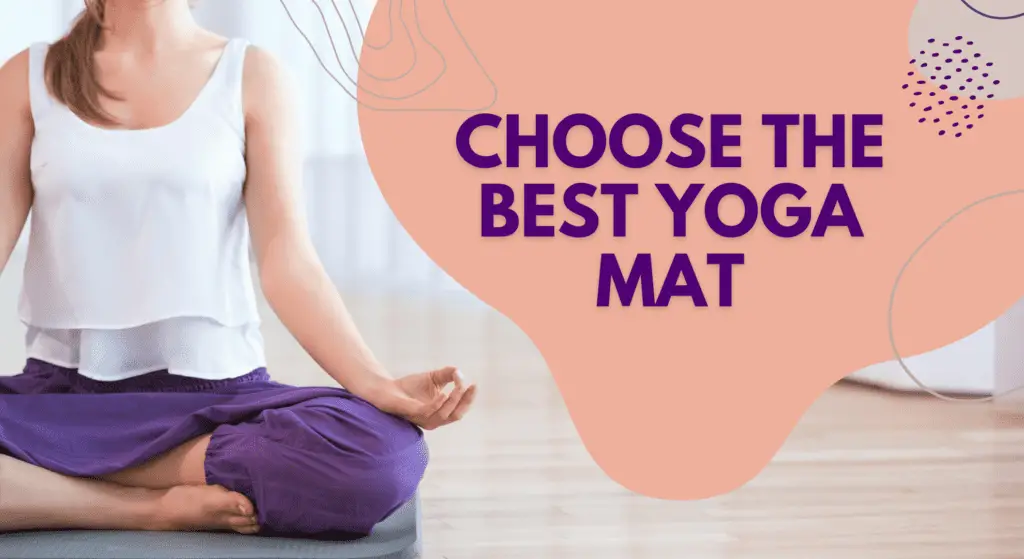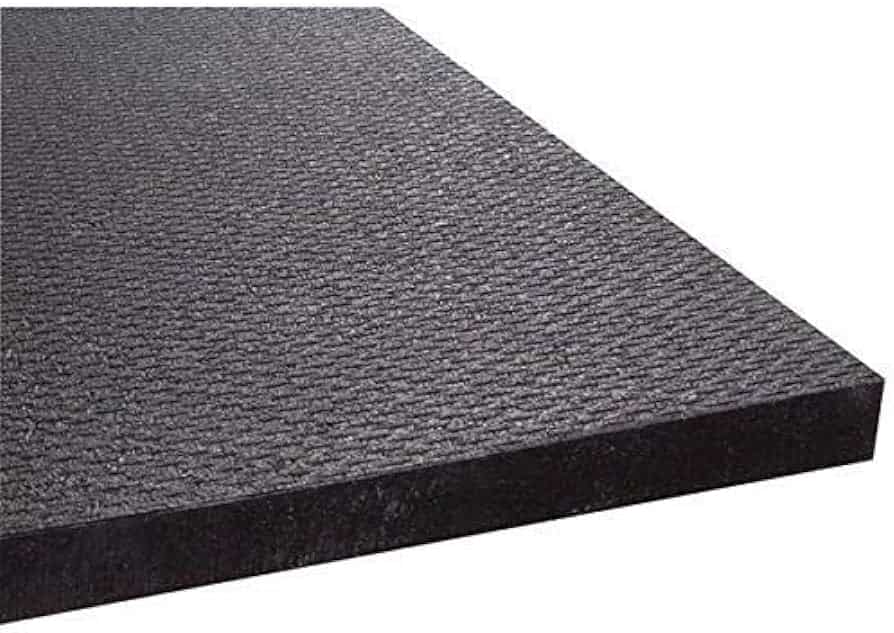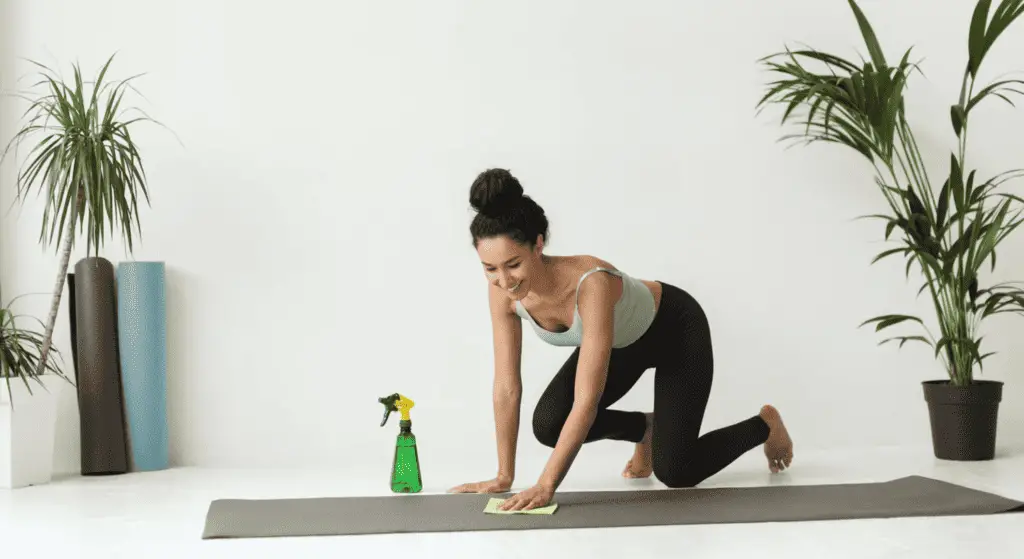
Introduction
A yoga mat is an essential piece of equipment for any yoga practice. Whether you are just starting out or have years of experience flowing through vinyasa sequences, having the right yoga mat allows you to progress in your practice with proper alignment, traction, and joint protection. When used with yoga blocks and straps, a good yoga mat creates the foundation to perform poses safely and comfortably.
Yoga mats provide padding and cushioning between your body and the hard floor surface. What was once just a simple towel has evolved into a booming yoga equipment industry focused on mat technology and sustainability. The standard dimensions for most yoga mats are 24 inches wide and 68 inches long. This size works well for people under 6 ft tall. More advanced yogis may prefer extra thick 1/4 inch mats for therapeutic benefits or sticky towel-topped mats designed especially for hot yoga classes. Premium yoga mat brands like Manduka, Jade Yoga, and Liforme produce high-quality mats known for durability, performance, and sustainability using natural materials.
With so many factors to consider from size to material to special features, it can feel overwhelming to choose the perfect yoga mat suited for your individual height, practice style, and fitness goals. This comprehensive guide covers all the key criteria to evaluate when deciding which yoga mat is right for your personal needs as a yogi.
The Ultimate Yoga Mat Buying Guide. Click hear
Determine Your Budget:
The first step is deciding how much you want to spend on your yoga mat. There is quite a range when it comes to price. Basic yoga mats start at $10-15 for a simple foam mat from big box stores. These will provide decent grip and padding for beginners. However, cheaper mats tend break down more quickly with regular use.
Mid-range mats from specialty stores generally cost between $50-100. These mats last longer and provide more features like alignment lines or antimicrobial coatings to inhibit bacteria growth. Many standard studio mats fall within the mid-range category.
High-end premium mats made of eco-friendly materials like rubber and cork typically start around $100-150+. Top brands like Liforme and Manduka produce exceptionally durable mats with superior grip and cushioning. Their patented fabrics retain shape and performance for many years with proper care. While the higher price tag is an investment upfront, a quality mat will save money over time by avoiding replacements every year or two.
Consider how often you plan to practice yoga and whether it is your primary form of exercise when setting a budget. If yoga is an occasional hobby, a basic mat will meet your needs. For daily practice, investing in a thicker premium mat around $100 provides enough padding for joints and retains stability.
Choose Appropriate Length Based on Height
Another key factor is properly sizing your mat for your body’s dimensions. Standard length mats measure 68 inches which provides enough room for most people under 6 ft to lie down flat. If you are over 6 ft tall, consider getting an extra long mat ranging from 74-84 inches. It is important your whole body fits on the mat with a few inches to spare so you don’t hang off the edge during seated or supine poses.
Likewise, consider getting a wide or extra wide mat if you have broad shoulders or a bigger frame. Standard mat width is 24 inches wide and slim models measure 20 inches. Large and extra-large mats go up to 28 inches wide or more to provide ample space for wide-legged poses. Ensure your whole torso and limbs fit inside the mat perimeter without touching the floor.
You can measure your ideal mat size by lying down with arms overhead and legs straight to determine the length needed. For width, come into a low lunge and see if your knees extend beyond the mat edges by several inches. Having a properly sized yoga mat based on your measurements allows you to move smoothly through sequences without restriction.
Evaluate Thickness and Padding for Joint Support

The thickness of a yoga mat impacts the amount of cushioning and padding it provides. Thinner 1/16-inch mats are highly portable for travel and provide decent support for those without joint issues. The standard thickness for basic studio mats is 1/8 inch, which offers adequate cushioning and joint protection for most practice styles.
If you have sensitive joints, or injuries or are over age 50, consider investing in an extra thick 1/4 inch or more mat. The extra padding helps prevent wear and tear on the knees, hips, spine, and wrists during floor poses. Those who practice daily or more vigorous styles like hot yoga and HIIT workouts would also benefit from a thicker mat around 1/4 inch thickness.
Here is an overview of common yoga mat thicknesses:
In addition to overall thickness, the materials used throughout the mat layers impact shock absorption. Many mats use an open or closed-cell foam with durable outer fabrics. The density of these layers affects how cushy the mat feels. Testing out mats in person allows you to compare padding levels.more
Assess Material Based on Grip and Cushioning:
Yoga mats come in a wide range of materials, each with pros and cons for sustainability, grip, cushioning, and durability. The most common types of yoga mat fabrics include:
PVC
PVC (polyvinyl chloride) mats are very affordable and provide decent grip and cushioning for beginners. This is why many studios use PVC mats for large classes due to low cost. However, PVC tends to break down through sweat and heat over time. The major downside is PVC mats are slippery when exposed to moisture. The vinyl surface becomes slick during hot yoga or high-intensity workouts as you sweat. PVC is also the least environmentally friendly mat material due to not being biodegradable.
Natural Rubber
Sourced from rubber trees, natural rubber mats offer superior grip, even when wet with sweat. The texture allows you to flow smoothly between poses without sliding around on slick floors. Natural rubber is very durable and withstands frequent use in studios or daily home practice. It provides decent padding for joints. These mats do come with a higher price tag but tend to outlast cheaper options. Of all the common fabrics, natural rubber is among the most sustainable and biodegradable.
Cotton
For an eco-friendly choice, cotton yoga mats use natural plant-derived materials. However, cotton tends to compress over time so it loses its cushioning ability. The grip also tends to be inferior to rubber or rougher materials. However the breathability and moisture-wicking of cotton is ideal for hot yoga classes to prevent pooling sweat. Those with latex allergies may also prefer cotton mats for their natural composition.
Jute
Jute fiber yoga mats provide a good grip on both sides with a slightly rough woven texture to prevent sliding. These mats are very sustainable as jute is biodegradable, renewable plant fiber. However, jute is not as padded as other materials so not ideal if you have sensitive joints. Combining jute and cotton creates a nice blend of grip and breathability.
Microfiber Towel
Designed specifically for hot yoga and aerobic workouts, microfiber towel-mats sit on top of a regular mat to soak up sweat. The soft terry cloth top layer improves traction during sweat-inducing classes while preventing skin irritation. After class, simply throw these towel toppers in the wash. They provide no cushioning by themselves so require an additional mat underneath for padding.
TOP
Thermoplastic elastomer (TPE) is an emerging eco-friendly yoga mat material made from synthetic blends rather than PVC. TPE provides similar grip, cushioning, and performance to standard mats. It is high-density with durable construction. Though relatively new to the market, TPE aims to be more sustainable by using biodegradable or recyclable materials.
Testing out different mat fabrics and textures in person is recommended to determine which you prefer. This allows assessing qualities like density, squish factor, tackiness, padded pressure points, and how your skin reacts. Those with latex allergies should verify materials before buying as natural rubber contains latex. Avoid using yoga mats on soft or slippery surfaces which impair traction.
Consider Intensity:
Determining what style of yoga you practice or workout routines you pair with yoga is key when selecting a mat. Gentler, low-impact styles like hatha and restorative yoga do not require as much cushioning or grip as faster-paced practices. Using yoga for cross-training with running or weights also places more wear and tear on joints than occasional vinyasa flows.
Those new to yoga or who practice casually 1-2 days per week do fine with a basic 1/8-inch thick standard mat. The minimal padding still protects bones and muscles during gentle flows, twists or holding poses. Budget mats also suit beginner yogis unsure if they will stick with consistent practice.
However, if you practice vinyasa, hot yoga, or high-intensity sequences 4+ days per week, investing in a thicker mat becomes worthwhile long-term. The extra cushioning of 1/4 inch or more mats gives knees, wrists, and elbows essential support during planks, chaturanga, and floor postures. Advanced students may also appreciate specialty alignment markings for optimal hand and foot placements.
Here are yoga mat considerations for different experience levels and practice intensity:
Beginner Yogis
Intermediate Yogis
Advanced Yogis
Cross-Training Athletes
No matter your skill level, always listen to your body and provide enough support through quality padding. Combining yoga with high-impact exercise requires more stability and cushioning from your mat to prevent injury long-term.
Determine if Special Features Are Needed Based on Needs:
Beyond thickness and materials, some yoga mats come with special features to suit certain needs or injuries. For those with ongoing wrist, knee, or shoulder issues, a mat with extra padding aligned to joint pressure points offers therapeutic relief. The added cushioning helps protect vulnerable joints during weight-bearing poses.
Pregnant yogis also benefit from extra thick and wide mats as their balance and center of gravity shift. Some prenatal mats even have cutouts to accommodate a growing baby bump. Support bolsters and pillows may be needed additionally during restorative relaxation.
Special alignment markings serve as visual guides for hand and foot placement in foundational postures. These lines, stripes, and patterns help newcomers find proper footing for warrior poses, lunges, or balancing positions. However, some advanced yogis feel restricted by excessive markings and prefer a blank mat workspace.
Antimicrobial mat additives prevent bacteria and germs from accumulating deep in fibers. This inhibits odors, stains, and degradation over years of use. Ideal for yogis who sweat excessively or practice daily, antimicrobial coatings maintain hygiene. Similarly, open-cell mat fabrics that don’t absorb moisture help prevent buildup. Easy-clean surfaces conveniently wipe down after use without retaining dirt or spills.
Portable mats fold up for travel and outdoor classes, focusing on thin lightweight construction. While convenience and transportability are nice for vacations or outdoor festivals, portable mats severely lack appropriate padding for regular practice. If traveling frequently though, durable foldable mats provide sufficient short-term support.
Finally, hot yogis and those in humid climates require exceptional grip strength when wet. Mats become slippery when exposed to copious sweat or heat. Towel-top, natural tree rubber, and textured mat surfaces allow stable traction during soaked flows. Carrying a small towel just in case excessive moisture builds up is recommended to prevent sliding injuries.
Best Eco-Friendly Yoga Mats:
For environmentally-conscious yogis, sustainable mat materials are available in all price ranges nowadays. The most common eco-friendly fabrics include non-Amazon harvested natural tree rubber which is biodegradable. Organic cotton grown without pesticides is also renewable and non-toxic. Jute fiber from plants is compostable and recyclable. Lastly, TPE synthesized materials aim to be more sustainable alternatives to PVC using recyclable blends.
When researching manufacturers, look for certifications like Fair Trade, Bluesign or OEKO-TEX which indicate responsible harvesting and production methods. For custom graphic prints, water-based inks skip toxic chemicals. Consider checking buy-back or trade-in programs to reuse mat components after their lifespan ends rather than tossing in a landfill.
Here are some of the top eco-friendly yoga mat brands in 2021:
Manduka – Natural rubber eKO mat made from sustainable sources with biodegradable fabric backing. Uses non-AZO dyes and latex harvested outside the Amazon.
Jade Yoga – Certified biodegradable natural rubber mats grown in sustainable Asian regions. The company plants a tree for every mat sold. Long lifespans.
Huge – Natural tree rubber decomposes naturally. The biodegradable jute fiber version is available too. Bluesign system certified and PVC free.
Yoli – Mats created from natural TPE materials that are recyclable post-use. Vegan and moisture-wicking. Grippy texture.
Heathyoga – TPE material constructed of renewable sugarcane extracts and recycled foam mix. Odor resistant too.
Yoloha – Cork yoga mats derived from recycled tree bark harvested sustainably. Biodegradable and naturally antimicrobial.
While sometimes pricier upfront, ethically sourced yoga mats with greener compositions ultimately save resources long-term. The durable construction typically outlasts cheaper materials as well by many years.
Care and Cleaning Practices to Make Your Yoga Mat Last:

Caring properly for your yoga mat ensures it provides padding, grip, and support for as long as possible before needing replacement. How often you clean the mat and what products you use make a major difference in lifespans.
Ideally yoga mats should be cleaned immediately after getting sweaty to prevent bacteria or mildew growth in damp fibers. Quickly wiping down with gentle soap and a damp cloth prevents odors and stains from setting in. Then allow the mat to fully air dry before rolling up to store away. Avoid bunching up when wet as moisture gets trapped internally and accelerates deterioration.
For a deeper clean every few weeks, use either a gentle yoga mat spray cleaner or mix up a DIY vinegar and water solution. Lightly mist the mat and wipe down with a soft bristle brush and microfiber towel. Rinse away residue before air drying. Harsh chemical cleaners can eventually break down and dull yoga mat surfaces, causing flaking or cracks.
Watch for visible signs your trusted yoga mat needs replacing instead of prolonging use after it wears thin in padding and grip. Consistently slipping around and feeling the hard floor through minimal cushioning means performance is shot. About every 2 years is the average for needing a new mat with regular practice. Rotate between 2 quality mats to make each last 4+ years.
Investing in your yoga begins with an appropriate mat for your practice style and body type. Protecting joints and providing a non-slip surface is crucial for advancing poses safely. While cost can differ greatly based on features and materials, expect to replace a quality mat every few years.
Final Tips When Selecting the Best Yoga Mat
To recap, follow this criteria when deciding the ideal yoga mat to match individual needs:
While quality yoga mats represent an investment, their longevity, and performance truly do improve practice. Paying attention to key features allows confidence-building poses, trying new sequences, and advancing skill levels without restriction or fear of injury. Check popular reviews and ask yoga instructors for recommendations if uncertain about where to start. Happy practicing yogis! Namaste.
Elevate Your Experience: Before Read this article after you will move to next article
- The 7 Best Yoga Mat for Bad Knees to Reduce Pain and Discomfort||
- The Ultimate Yoga Mat Buying Guide||